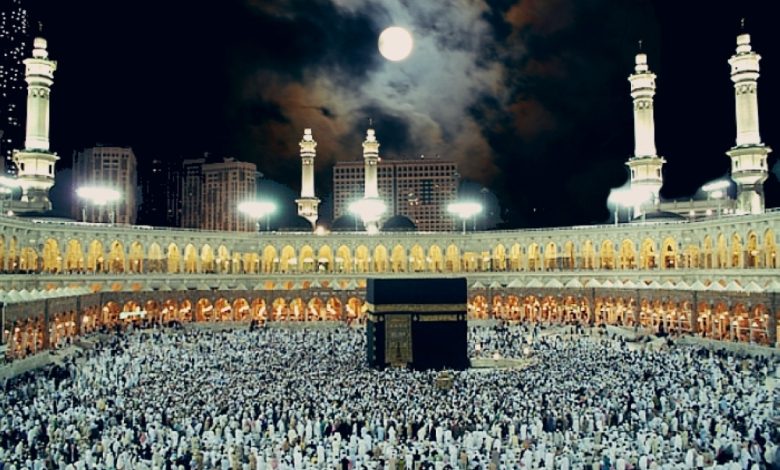Difference Between Hajj And Umrah

As Muslims, doing the Hajj, or trip to Mecca, is one of the fundamental obligations we should strive to fulfill in our lifetimes. Those who are capable may also perform the Umrah. But what’s the difference between Hajj and Umrah?
Islamists travel on spiritual pilgrimages called hajj and Umrah to seek Allah’s blessings. By doing this, pilgrims get spiritual merits and have a chance to replenish themselves. People firmly believe that performing the Hajj and Umrah also results in forgiveness for previous transgressions. Certain rituals are there to perform during both pilgrimages by the devotees. They make the pious treks. But the fundamental distinction between Hajj and Umrah is that they are observed and how significant they are. These pilgrimages have several differences. We offering you the best Easter Umrah packages to fulfill your dreams.
Hajj
The yearly Muslim pilgrimage is known as Hajj. It is regarded as one of Islam’s five pillars. The Prophet Muhammad created the rituals. They are to practice on this voyage. But according to the Quran, these customs date back to Prophet Ibrahim. Allah orders him to abandon his wife and son in the Mecca desert. Islam holds that carrying out these procedures with faith in Allah symbolizes surrender to god and brings merit.
How to find Cheap Flights for Hajj and Umrah trip?
Umrah
The Islamic pilgrimage is known as Umrah. It occurs at any time of the year in the holy city of Mecca. Muslims refer to it as the “little pilgrimage,” which purifies the traveler and absolves him or her of the wrongs and crimes of the past. In the Islamic faith, making the Umrah is high encouragement. It is an act of worship and adoration for the Most Gracious Allah. Group Umrah Packages UK will be best for you.
Although both the Hajj and Umrah are important Islamic rites. They are to carry out at the Holy Kaaba. They differ greatly from one another in terms of their ceremonies and significance. These pilgrimages are distinguished from one another on several grounds.
Main differences
-
Obligatory acts of Hajj and Umrah
The mandatory actions for Umrah include accepting the Ihram state after expressing the intention to conduct the pilgrimage, offering Tawaf, performing Sayi between the hills of Safa and Marwa, and finally shaving the head or shaving off a small amount of hair. When undertaking Hajj, however, one must take Ihram from Meeqat, remain on Arafat until dusk, spend the night at Muzdalifah, spend the night in Mina during Tashreeq, stone the Jamarat, shave one’s head, and then complete the farewell circumambulation. Notably, only after completing all of these mandatory deeds, were both pilgrimages deemed complete.
-
Importance of Hajj and Umrah
Both Umrah and Hajj provide pilgrims with forgiveness and additional merits in Islam. However, each of these excursions has a distinct significance depending on the religion. Every Muslim has to perform the Hajj at least once during their lifetime. They are physically and financially able to do so. However, they are not required to perform the Umrah. In contrast to the important pilgrimage of Hajj, Umrah is a strong piece of advice. It is not required. Because of this, Umrah and Hajj are distinct from one another.
-
Timings of Hajj and Umrah
The timing of the Hajj and Umrah pilgrimages is another variation between them. Zilhaj, the final month of the lunar calendar, is when Muslims travel to Mecca for the Hajj. The Hajj rituals are between the eighth and twelfth days of this month. However, Umrah occurs throughout the year. Easter Umrah is the best time of Umrah for you.
-
Hajj rituals and Umrah rituals
The length of time needed to perform the Umrah and Hajj pilgrimages is another difference. A pilgrim can complete the Umrah ceremonies in a matter of hours. The Hajj completes in at least five to six days. Time variance is according to the rites, rituals, and physical labor. It is performed on these pilgrimages.
Pillars of Hajj
The Prophet stated that the first is Ihram. The actions have rewards according to intentions. Ihram has a set schedule that pilgrims must follow. The second is Sayi. In Sayi, the Prophet claims it is Allah’s will. Waqf is third in line. The Prophet also stated that Hajj is Arafah. It is enough to stand for a little period at any Arafah location on the ninth day of Zilhaj at dawn. The final step, Tawaf al-Ifaadah, is essential. The Almighty commands them to stop being messy and to perform Tawaf all around the old dwelling.
Pillars of Umrah
Ihram, a sacred state that one must enter before commencing the holy journey, is the first pillar of Umrah. The second is Tawaf, in which a pilgrim circuits the revered Kaaba counterclockwise. The third is Sayi, which entails walking ritualistically between the Safa and Marwah mountains. It stands for life’s constant struggle. The final pillar, Tahallul, signifies the end of the holy state of Umrah. After finishing the Umrah, pilgrims have to shave their heads. Fulfill all the pillars of Umrah this Easter by availing of Kaabah Tours offer of Easter Umrah.
Places for Hajj and Umrah
Pilgrims do not need to go to other places to execute the rituals associated with Umrah because they can only be completed at the Holy Kaaba. They can perform Umrah all in one location. While performing the Hajj, pilgrims must go to many locations, including Arafat and Muzdalifah. To complete their Hajj, they must visit these locations.
Types of Hajj
There are 3 types of Hajj. The three types of Hajj are Hajj ul Qiran, Hajj ul Ifrad, and Hajj ul Tamattu.
-
Hajj ul Qiran
When performing the Hajj ul Qiran, which combines the Hajj and Umrah, the pilgrim dons the Ihram to perform both. A Qiran is someone who completes this kind of hajj. It does not require animal sacrifice.
-
Hajj ul Ifrad
It is the simplest form of Hajj. In this type of Hajj, the pilgrim wears the Ihram to perform only Hajj and not Umrah. They won’t go on Umrah during the Hajj month. A Mufrid is someone who completes this kind of Hajj. The pilgrim must sacrifice an animal to accomplish Hajj ul Ifrad.
-
Hajj ul Tamattu
When completing a Hajj al-Tamattu, the pilgrim wears the Ihram to just perform Umrah throughout the Hajj month. On the eighth day of Zilhaj, they don the Ihram for the Hajj, and they perform Tawaf, Sa’ee, and Qasr for Umrah. They then perform all of the Hajj’s obligations and rites. A Mutamatti is someone who participates in Hajj al-Tamattu. A believer has the choice to switch their Niyyah to Tamattu, which is the most advised kind of Hajj, or to Hajj ul-Qiran or Ifrad.
Types of Umrah
There are just two kinds of Umrah, according to Islam. Umrah ul Tamattu and Umrah ul Mufradah. Since Umrah ul Mufradah is performed all. But long aside from Hajj days. It is separate from Hajj. While Umrah al-Tamattu is conducting alongside Hajj. It concludes before the Hajj ceremonies begin. It is before the eighth of Zilhaj. Both Umrah types follow the same process. Easter Umrah packages are the most recommended option for Umrah-al-Mufradah.
Can you read more information about Umrah
Conclusion
While both the Hajj and the Umrah are spiritual pilgrimages that deepen your faith and draw you nearer to Allah, they are not equivalent. All Muslims are required to perform the Hajj because it is one of Islam’s five pillars. It is a prerequisite or requirement for practicing their religion. In short, both Hajj and Umrah change the life of a pilgrim. Kaabah Tours is always there for you in providing you best Umrah packages. But we know that Umrah in the summer season is very much difficult so people prefer to do Umrah at Easter




